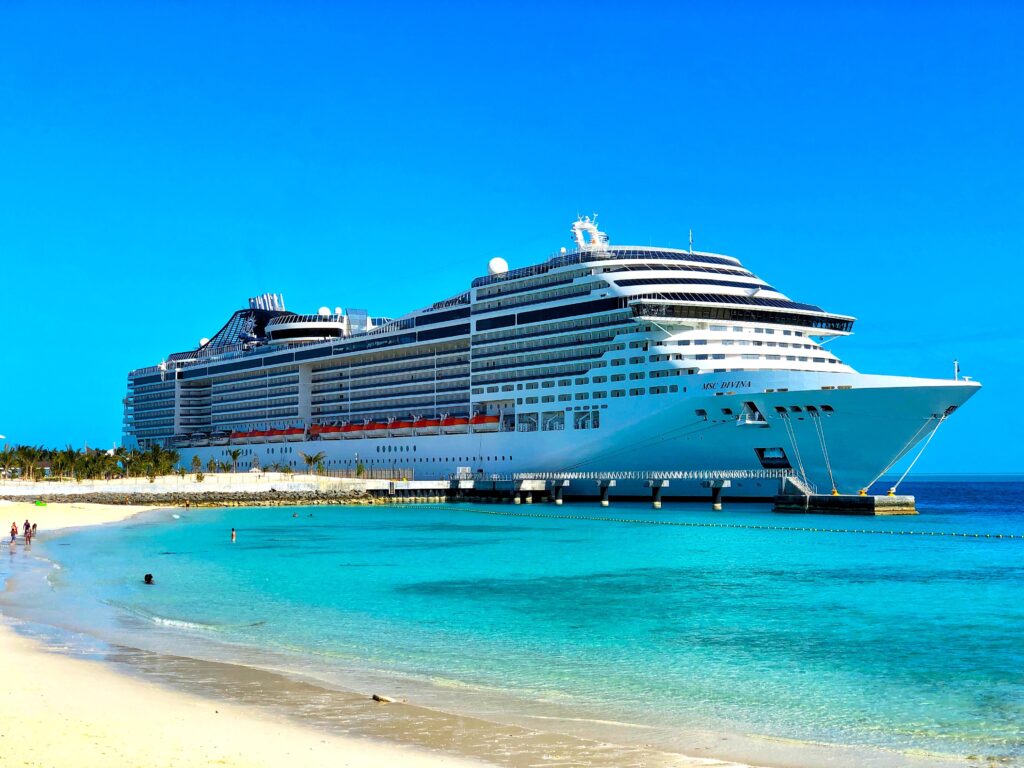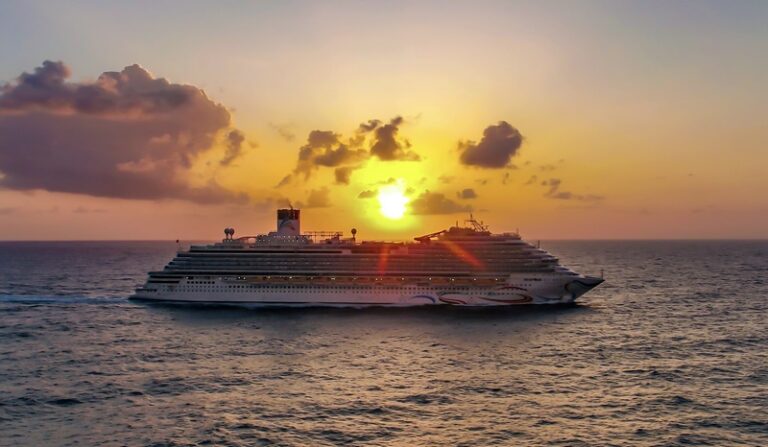The Mystery Of Missing Luggage On Cruises Solved!
Imagine finally going on that dream cruise you’ve been saving up for, only to have your luggage mysteriously disappear. It’s every traveler’s nightmare, but luckily, a solution has been found! Introducing “The Mystery of Missing Luggage on Cruises Solved!” This revolutionary product is here to put an end to your worries, ensuring that your belongings stay safe and secure throughout your entire cruise vacation. Say goodbye to the stress of lost luggage and hello to worry-free travels with this innovative solution.

Tracking and Identification Systems
RFID Technology
RFID Technology, or Radio Frequency Identification, is a system that uses electromagnetic fields to automatically identify and track tags attached to objects. In the context of the cruise industry, RFID technology is used to track and manage luggage. Each piece of passenger luggage is equipped with an RFID tag, which contains unique identifying information. These tags are scanned at various touchpoints throughout the cruise journey, from check-in to the final destination. Through RFID technology, cruise staff can easily track the location of each piece of luggage, ensuring that it reaches the intended destination without getting lost or misplaced.
Barcoding Systems
In addition to RFID technology, many cruises also utilize barcoding systems to enhance luggage tracking and identification. Barcoding systems assign a unique barcode to each piece of luggage, which is then scanned at various checkpoints. These checkpoints include the check-in process, baggage handlers’ stations, and baggage loading and unloading areas. By scanning the barcodes, cruise staff can quickly access relevant information such as the passenger’s name, cabin number, and itinerary. This information ensures accurate identification and enables smooth handling and delivery of luggage throughout the cruise journey.
Security Cameras
Security cameras are an essential tool in tracking and identifying individuals who may be involved in luggage theft or unauthorized access. These cameras are strategically placed in various areas of the ship, including the check-in area, baggage handling areas, and restricted access zones. The footage captured by security cameras serves as valuable evidence in case of any mishaps or security breaches. Furthermore, security cameras act as a deterrent, as individuals are less likely to engage in illicit activities if they know they are being monitored. The presence of security cameras adds an extra layer of security and ensures the safety of passengers’ belongings.
Handling Procedures
Check-In Process
The check-in process is a crucial step in ensuring the proper tracking and handling of passenger luggage. During check-in, each passenger’s luggage is assigned an RFID tag and a unique barcode. Both of these identification systems play a significant role in tracking and identifying the luggage throughout the cruise journey. Additionally, during check-in, cruise staff verifies that each passenger’s luggage matches the corresponding cabin number, ensuring accurate delivery. By implementing efficient and automated check-in procedures, the risk of luggage getting lost or misplaced is significantly reduced.
Baggage Handlers
Baggage handlers are responsible for the proper handling and transportation of passengers’ luggage. These dedicated staff members undergo rigorous training to ensure efficient and careful handling of the luggage. Baggage handlers work closely with the tracking and identification systems, scanning the RFID tags and barcodes at designated checkpoints. This process allows them to differentiate between luggage that has been properly accounted for and any pieces that may pose a concern. In case of any discrepancies or suspected irregularities, baggage handlers are trained to report to the appropriate authorities for further investigation.
Baggage Loading and Unloading
Proper baggage loading and unloading procedures are crucial to prevent luggage from being lost or misplaced during the cruise journey. Dedicated staff members, under the guidance of supervisors, carefully load and unload the luggage, ensuring that each piece is properly tagged and accounted for. By coordinating with the RFID technology and barcoding systems, the staff can double-check the accuracy of the luggage data before it is loaded onto the ship or transferred to the appropriate holding area. These procedures minimize the chances of luggage ending up in the wrong location and ensure a smooth and efficient handling process.
Communication and Coordination
Cruise Staff
Effective communication and coordination among cruise staff play a fundamental role in ensuring the security and tracking of passenger luggage. Cruise staff members are trained to promptly report any suspicious activities or issues regarding luggage handling to the relevant authorities. They act as the first line of defense in preventing theft, unauthorized access, or mishandling of luggage. Clear communication channels, regular training programs, and efficient reporting systems enable staff members to address any emerging concerns and maintain a safe and secure environment for passengers and their belongings.
Port Authorities
Port authorities play a crucial role in maintaining security and coordination within the cruise industry. They work closely with cruise lines to implement and enforce security protocols and regulations. Port authorities conduct regular inspections, ensuring that cruise ships comply with safety standards and procedures. Additionally, they collaborate with cruise staff to monitor the movement of luggage, passengers, and personnel within the port area. By maintaining effective communication with the cruise lines and other relevant stakeholders, port authorities ensure the smooth operation of luggage handling procedures and enhance overall passenger security.
Local Law Enforcement
Local law enforcement agencies often collaborate with cruise lines to strengthen security measures and deter any criminal activities. They work closely with port authorities and cruise staff to conduct thorough background checks on employees and contractors involved in luggage handling. Local law enforcement agencies also provide guidance and support in investigating any incidents of missing or stolen luggage. By maintaining open lines of communication and sharing information, local law enforcement agencies contribute significantly to the prevention and resolution of luggage-related issues.
Passenger Accountability
Identification Verification
To ensure passenger accountability, identification verification is a critical step in the luggage handling process. During the check-in and boarding procedures, cruise staff verifies the identity of each passenger and cross-references it with the corresponding luggage information. This verification process ensures that each piece of luggage is linked to the correct passenger, reducing the chances of misplaced or misdelivered belongings. By implementing strict identification verification protocols, cruise lines maintain a high level of accountability and minimize the risk of luggage-related errors.
Passenger Checklists
Passenger checklists are valuable tools in ensuring the proper tracking and delivery of luggage. Cruise staff maintains detailed checklists containing the names, cabin numbers, and luggage details of each passenger. These checklists are referenced throughout the cruise journey, serving as a point of reference for baggage handlers, cabin attendants, and other staff involved in luggage handling. By maintaining accurate and up-to-date checklists, cruise lines can quickly identify any discrepancies or missing items and take appropriate actions to rectify the situation.
Baggage Claim Procedures
Baggage claim procedures are designed to ensure a smooth and efficient process for passengers to retrieve their luggage at the end of a cruise. Cruise lines provide clear instructions and guidelines to passengers for the baggage claim process. These procedures often involve passengers presenting their identification documents and proof of ownership to reclaim their luggage. By verifying the passenger’s identity and cross-checking it with the corresponding luggage data, cruise lines further enhance passenger accountability and avoid mix-ups or incidents of stolen luggage.

Baggage Inspection
X-ray Scanners
To ensure the safety and security of all passengers, baggage inspection is a crucial step in the luggage handling process. X-ray scanners are commonly used to conduct thorough inspections of each piece of luggage. These scanners employ advanced technology to detect any prohibited items, weapons, or dangerous materials that may pose a threat to the cruise ship or its passengers. By implementing rigorous baggage inspection using X-ray scanners, cruise lines can mitigate potential risks and maintain a secure environment throughout the journey.
Hand Searches
In addition to X-ray scanners, hand searches are sometimes conducted to complement the baggage inspection process. Trained staff members perform manual searches of selected luggage, ensuring that nothing suspicious or prohibited evades detection through technology. Hand searches provide an extra layer of security, allowing for a more thorough examination of the luggage. By combining X-ray scanners with occasional hand searches, cruise lines maximize their efforts to prevent any unauthorized items from being carried onto the ship.
K9 Units
K9 units, consisting of specially trained dogs and their handlers, are often utilized to detect substances or odors that may be associated with illegal or dangerous items. These K9 units are an effective tool in baggage inspection, as the dogs’ keen sense of smell can detect hidden contraband, narcotics, or explosives that may not be readily identifiable by technology or human inspection alone. K9 units play a significant role in ensuring the safety and security of passengers and can quickly identify any potential threats, enhancing the overall efficiency of baggage inspection procedures.
Unauthorized Access and Theft Prevention
Secure Restricted Areas
To prevent unauthorized access to sensitive areas, cruise lines implement strict security measures. Restricted areas, such as the bridge, engine room, or crew areas, are secured with access control systems. These systems often utilize keycards, PIN codes, or biometric data to grant entry only to authorized personnel. By limiting access to these areas, cruise lines reduce the chances of theft, sabotage, or unauthorized handling of passengers’ luggage. Regular audits and training are conducted to ensure the integrity of restricted access systems and prevent any breaches.
Surveillance Systems
Surveillance systems, including security cameras and monitoring software, are deployed strategically across the cruise ship to deter theft and illicit activities. These systems actively monitor areas where passengers’ luggage is stored, ensuring the safety and security of the belongings. Surveillance systems are also used to track the movement of staff members and visitors, making it easier to identify any unauthorized access or suspicious behavior. By maintaining a 24/7 surveillance presence, cruise lines create a secure environment and minimize the risk of theft or mishandling of luggage.
Staff Training
The training of cruise ship staff plays a crucial role in preventing unauthorized access and theft. Staff members undergo comprehensive training programs that focus on the importance of security, integrity, and professionalism. They are educated on the potential risks and vulnerabilities associated with luggage handling and instructed on how to identify and report any suspicious activities. By emphasizing staff training, cruise lines instill a culture of accountability, ensuring that all personnel are vigilant and actively contribute to the prevention of theft and unauthorized access.

Cruise Industry Regulations
International Maritime Organization Standards
The International Maritime Organization (IMO) sets standards and regulations to enhance the safety and security of the cruise industry. These standards cover various aspects, including luggage handling and security procedures. Cruise lines are required to comply with the IMO’s guidelines, ensuring that they maintain adequate measures to prevent the loss or theft of passengers’ luggage. By adhering to these standards, cruise lines assure passengers that their belongings are in safe hands and that all necessary precautions are taken to protect their property throughout the cruise journey.
Transportation Security Administration Guidelines
The Transportation Security Administration (TSA) provides guidelines specifically tailored for the cruise industry. These guidelines outline security procedures, luggage screening protocols, and passenger identification requirements. Cruise lines work closely with the TSA to implement these guidelines, ensuring a consistent and standardized approach to security. By following TSA guidelines, cruise lines align their practices with national security standards, thereby promoting a secure and hassle-free experience for passengers while minimizing the risk of luggage-related issues.
Customs and Border Protection Procedures
To facilitate international travel, cruise lines work in collaboration with customs and border protection agencies. These agencies have specific procedures in place to ensure that luggage is appropriately screened and cleared at each port of call. Cruise lines coordinate with customs and border protection authorities to implement efficient customs procedures, reducing delays and ensuring the secure handling of passengers’ luggage. By adhering to customs and border protection procedures, cruise lines contribute to a seamless and secure cruise experience for passengers.
Lost and Found Departments
Reporting Lost Luggage
Cruise lines have dedicated Lost and Found departments to handle any reports of misplaced or lost luggage. Passengers are encouraged to report any missing items immediately upon discovering their absence. The Lost and Found departments document the details of the lost luggage, including the passenger’s name, cabin number, and a description of the missing items. By promptly reporting lost luggage, passengers increase the chances of recovery and allow cruise lines to initiate the necessary tracing and recovery processes.
Tracing and Recovery Processes
Upon receiving a report of lost luggage, cruise lines initiate tracing and recovery processes to locate and deliver the missing items to their rightful owners. These processes involve cross-referencing the information provided by the passenger with the existing tracking systems, such as RFID technology and barcoding systems. Cruise lines work diligently to locate the missing luggage, often collaborating with various departments and port authorities to track its whereabouts. By implementing efficient and thorough tracing and recovery processes, cruise lines aim to resolve cases of misplaced luggage as quickly as possible.
Compensation
In cases where lost luggage cannot be located and returned to the passenger, cruise lines have compensation policies in place to address any inconveniences and provide appropriate reimbursement. Compensation can range from monetary compensation to reimburse the value of the lost items to the provision of necessary replacement items. Cruise lines understand the importance of addressing the impact of lost luggage on passengers’ travel experience and aim to resolve these situations by offering fair and reasonable compensation options.

Common Causes of Misplaced Luggage
Passenger Error
One of the most common causes of misplaced luggage is passenger error. Passengers may unintentionally provide incorrect identification information, leading to misrouted or misdelivered luggage. It is essential for passengers to double-check the accuracy of their identity documents and ensure that they match the information provided during the check-in process. By being mindful of their own responsibilities and actively participating in the luggage handling procedures, passengers can contribute to the prevention of misplaced luggage.
Misplaced Bag Tags
Bag tags, whether RFID or barcode-based, are crucial in tracking and identifying luggage. However, if bag tags are misplaced or detached from the luggage, they can hinder the tracking and delivery process. It is important for passengers to securely attach the bag tags to their luggage and ensure that they remain intact throughout the journey. By properly affixing and preserving bag tags, passengers facilitate the tracking and identification of their luggage, reducing the chances of misplacement.
Misrouting
Occasionally, luggage may be misrouted during the handling process. This can occur due to various reasons, such as human error, technical glitches in the tracking systems, or miscommunication among staff members. While misroutings are relatively rare, they can happen in complex operations. Cruise lines continuously improve their systems and procedures to minimize the risk of misrouting, but occasional incidents can still occur. By promptly reporting any issues or concerns to the cruise staff, passengers can help expedite the resolution of misrouted luggage and ensure its timely delivery.
Preventative Measures for Passengers
Carrying Essential Items
To mitigate the impact of misplaced luggage, passengers should consider carrying essential items in their carry-on bags. These essential items may include medications, toiletries, a change of clothes, and any valuables. By having these items readily available in their carry-on luggage, passengers can minimize the inconvenience and discomfort caused by temporarily misplaced or delayed checked luggage.
Using Luggage Tags and Identifiers
To enhance the identification and tracking of their luggage, passengers should utilize luggage tags and identifiers. These can include personal contact information, such as name and phone number, affixed to the luggage using a secure tag or label. Luggage tags and identifiers make it easier for cruise staff to reach out to passengers in case of any issues or concerns regarding their luggage. By providing accurate and visible identification information, passengers increase their chances of having their luggage promptly returned to them if misplaced.
Insurance Coverage
Passengers may consider obtaining travel insurance that covers lost or misplaced luggage. Travel insurance policies often provide reimbursement for the value of lost items or expenses incurred due to luggage-related issues, such as replacement clothing or personal items. By securing appropriate insurance coverage, passengers have an added layer of protection and peace of mind, knowing that they are financially covered in case of any luggage mishaps.
In conclusion, the mystery of missing luggage on cruises has been significantly mitigated through the implementation of robust tracking and identification systems, stringent handling procedures, enhanced communication and coordination, passenger accountability measures, comprehensive baggage inspection methods, prevention of unauthorized access and theft, adherence to industry regulations, efficient lost and found departments, the understanding of common causes of misplaced luggage, and the adoption of preventative measures for passengers. Cruise lines prioritize the security and proper handling of passenger luggage, ensuring that their belongings are delivered safely and efficiently throughout the cruise journey. With these comprehensive measures in place, passengers can embark on their cruise vacations with confidence, knowing that their luggage is in secure hands.








